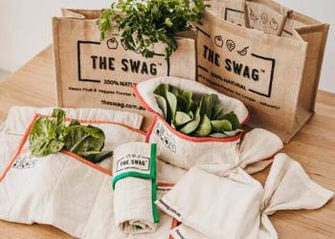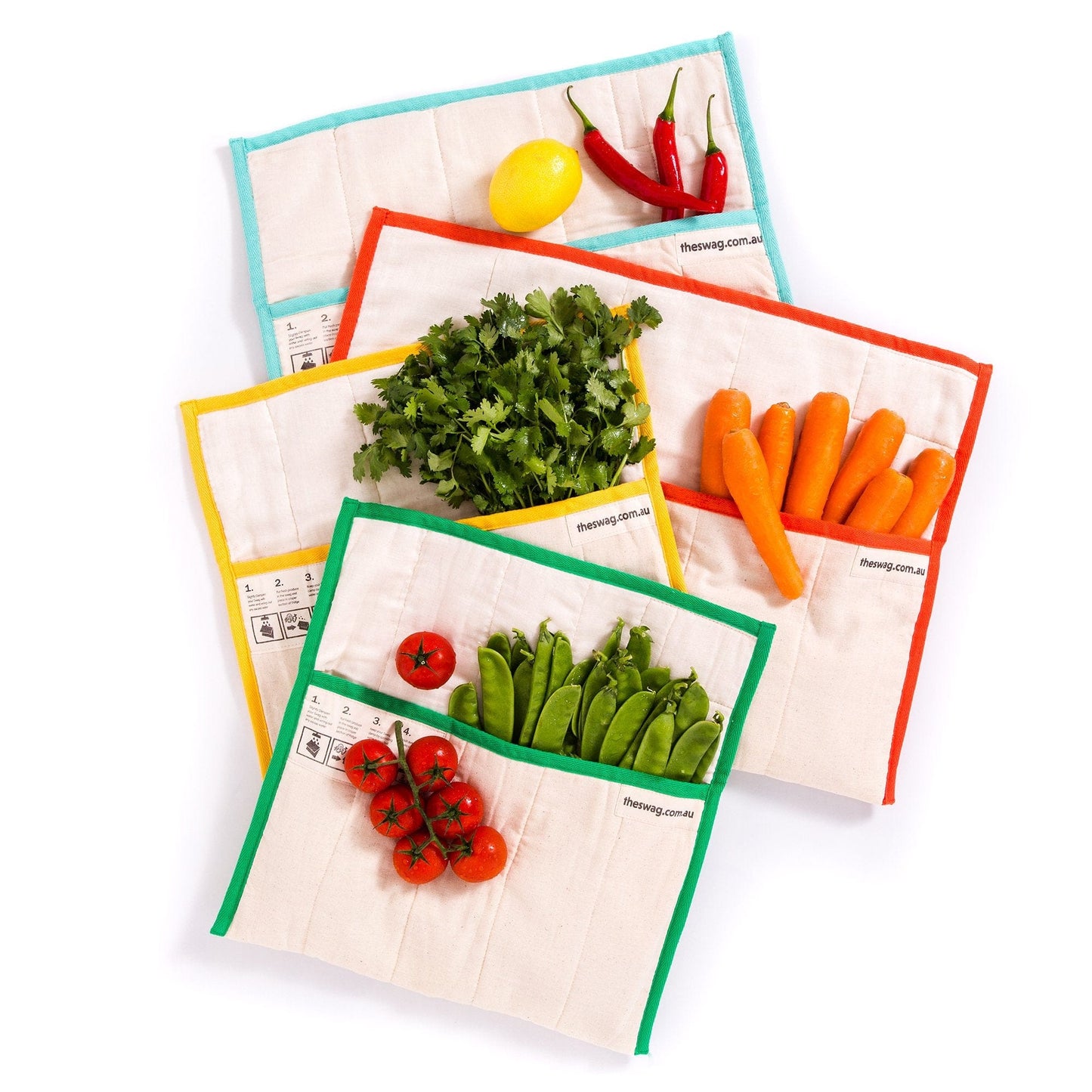Easy Plastic-Free Swaps, Comforting Recipes & Low-Waste Living
Winter is the perfect time to slow down, cook from scratch, and make the most of what’s in season, all while reducing plastic and food waste. Whether you’re deep-cleaning the fridge, planning school-holiday activities, or just craving a warm soup made from scratch, a few simple changes can make your home more sustainable.
This Plastic Free July, let’s embrace the new season with practical tips that help you store smarter, eat better, and waste less - without compromising on comfort.
From shopping seasonally to smarter storage, here’s how to make the most of winter while cutting down on plastic and food waste.
Why winter is perfect for a plastic-free home reset
While we often associate plastic free living with swapping out summer picnic cutlery and beachside water bottles, winter is an underrated time to go plastic-free. Why?
- It’s pantry season - soups, bakes and slow roasts mean more ingredients at home.
- You’re likely shopping less frequently, so longer-lasting produce matters more.
- Winter fruit and veg are perfect candidates for low-waste cooking and clever storage.
It’s also a time when plastic packaging tends to sneak in, all in the name of convenience during the colder months. But with a little planning, simple swaps can make a lasting difference.
Here are our top tips to help you keep your kitchen low-waste, cosy, and plastic-free this winter:
Adjust your fridge settings
Just like your wardrobe changes with the seasons, so should your fridge settings. As the weather cools, it’s a good idea to adjust your refrigerator temperature to better preserve fresh produce.
✅ Ideal fridge temperature for winter: 1°C–4°C (34°F–40°F)
Keeping your fridge within this range helps reduce spoilage and mould - especially when you’re storing fruit and veg in breathable, moisture-balanced storage like The Swag.
Shop seasonal
One of the easiest ways to avoid plastic and reduce food waste is to eat with the seasons. In July, Australian farmers are harvesting some of the most flavourful and hearty produce of the year - often sold loose at farmers’ markets or in bulk, which means less packaging and more freshness.
What’s in season in July (Australia):
Beetroot
Broccoli
Cabbage
Cauliflower
Celery
Leeks
Pumpkin
Silverbeet
Spinach
Sweet potato
Citrus fruits (oranges, lemons, mandarins, grapefruit)
Nashi pears
Apples
Zero-waste shopping tips
Let’s face it, the supermarket is full of plastic traps. But there are easy ways to avoid them:
- BYO produce bags (like The Swag’s lightweight drawstring bags) and reusable shopper bags.
- Shop at farmers’ markets, co-ops or greengrocers who sell loose produce
- Choose items without cling film or netting e.g., loose citrus over bagged
- Buy dried beans, lentils and grains in bulk to avoid plastic packaging
- Skip the plastic wrap by using wax wraps, silicone lids or storing cut veg in your Swag
The Swag way: 5 storage hacks that double your produce life
Once you’ve shopped smart, it’s time to store smart. This is where The Swag truly shines: keeping fruit and veg fresh for up to two weeks or more (compared to days in plastic or paper).
Here are five winter produce hacks:
-
Leafy greens like spinach and silverbeet
→ Remove ties, wash, pat dry and store loosely in a Large Swag. -
Root veg like beetroot or carrots
→ Trim the tops (they draw moisture), rinse and store in a Long Swag. -
Citrus fruits
→ Store unwrapped in a Small Swag to prevent sweating and mould. -
Herbs
→ Wrap in a slightly damp tea towel and pop inside your Swag or a glass jar with water in the fridge. -
Leeks, celery or spring onions
→ Cut to fit and store upright in a jar of water or popped in a Swag to reduce limpness!
Don’t forget the freezer: your zero-waste secret weapon
Winter is the perfect time to make your freezer work smarter, not harder. Freezing food can be a powerful way to reduce waste and avoid plastic.
Batch cooking = less waste + more comfort
On chilly evenings, it’s a joy to pull out a homemade meal that you cooked ahead of time.
- Make double portions of your favourite pasta sauces, soups or casseroles.
- Cool before storing in glass containers or silicone pouches (no need for cling film or plastic tubs).
- Label with the date and contents so nothing gets forgotten.
Freeze fresh produce before it turns
Have berries you can’t finish? A bunch of parsley you won’t get through? Freeze them before they go bad!
Berries: Rinse, dry and freeze on a tray before transferring to a container. Perfect for smoothies, baking or porridge.
Herbs: Chop and freeze in olive oil in an ice-cube tray for easy flavour boosts.
Veg scraps: Freeze to make a DIY veggie stock later.
By keeping a freezer stocked with prepped ingredients and meals, you’ll save time, cut down on plastic packaging, and reduce the risk of food going to waste.
Turn leftover herbs into infused oils
If you’ve got fresh herbs like rosemary that are on their last legs, don’t toss them - turn them into something delicious.
This homemade rosemary oil is easy to make, plastic-free, and brings a comforting winter flavour to everything from roast veggies to sourdough dipping.
How to make rosemary oil:
-
Gently rinse and pat dry a few sprigs of fresh rosemary.
-
Warm your favourite olive oil slightly (not boiling).
-
Add the rosemary to a clean, dry glass jar and pour the oil over the top.
-
Seal and store in a cool, dark place for 1–2 weeks to infuse.
-
Optional: strain before using.
🌿 Tip: Use this oil to finish roast pumpkin, drizzle over soups, or dip crusty bread by the fire.
Cosy winter recipes
These two warming recipes are made with in-season produce and can be stored in glass or reusable containers.
🥣 Pumpkin, Miso & Ginger Soup
Ingredients:
1 kg pumpkin (peeled, deseeded, chopped)
1 onion (chopped)
2 cloves garlic (crushed)
1 thumb-sized piece of fresh ginger (grated)
1 tbsp white miso paste
1 tbsp olive oil
4 cups vegetable stock
Salt & pepper to taste
Method:
-
In a large pot, heat the olive oil over medium heat. Add onion and garlic, cooking until softened.
-
Add ginger, then pumpkin. Stir for a few minutes.
-
Add vegetable stock and bring to a boil. Simmer for 20 minutes or until pumpkin is tender.
-
Stir in miso paste, then blend the soup until smooth.
-
Serve warm with crusty bread. Freeze leftovers in glass jars (leave room for expansion).
🍊 Citrus Peel & Apple Marmalade
Ingredients:
Peels of 3 oranges (pith removed)
Juice of 2 oranges
2 apples (grated, skin on)
1 lemon (juice + zest)
1 cup water
1 cup raw sugar (or less, to taste)
Method:
-
Slice the orange peel into thin strips. Simmer in water for 10 minutes, then drain.
-
Add orange juice, lemon juice/zest, apple, sugar, and 1 cup of fresh water to a saucepan with the softened peel.
-
Simmer on low for 30–40 minutes until thickened.
-
Pour into clean glass jars while hot. Store in the fridge for up to 3 weeks.
School-holiday plastic-free experiments for kids
With the winter school holidays falling in July across most of Australia, it’s the perfect time to get the kids involved in your low-waste lifestyle. These hands-on activities are fun, simple and sneak in a bit of science and sustainability education.
Fun, simple activities:
DIY Citrus-peel fire-starters
→ Save orange and lemon peels, dry them out, and use them for kindling when camping or lighting a fire! Lay the citrus peels out on a tray and leave them to dry completely. Once dried, toss them into the fire along with your kindling. The natural oils in the peels help ignite the flames, making them a great low-waste alternative to paper fire starters. Store your dried peels in a paper bag until you're ready to use them.
“What stays fresh longer?” veggie experiment
→ Turn your fridge into a mini science lab! Let kids compare how the same type of vegetable lasts when stored in its original plastic packaging versus in a Swag bag.
Track:
-How each one looks and smells after 3, 5 and 7 days
-Which lasted the longest
-Which created the most waste
This is a great way to show them the impact of thoughtful storage - and yes, this is one case where using plastic for comparison is allowed!
Make your own paint stamps
→ Give leftover veggie scraps a second life by turning them into art tools. Use the cut ends of celery, bok choy or apples as stamps. Dip them in non-toxic paint or food colouring and create artwork, wrapping paper or greeting cards. It’s a creative way to reduce food waste and keep kids entertained during a chilly afternoon indoors.
Ready to give your winter pantry a plastic-free reset?
Whether you’re starting small or going all in this Plastic Free July, your winter pantry is a great place to begin. By choosing seasonal produce, avoiding unnecessary plastic, and using clever storage like The Swag, you’ll waste less, save more, and eat better - all while helping the planet.
💚 Shop The Swag storage essentials
For more inspiration this Plastic Free July…
Check out these reads next:
👉 How reducing plastic waste can help protect wildlife
Discover the impact plastic pollution has on native animals, and how small swaps can make a big difference.
👉 Why living plastic-free is important for your health and the planet
Explore the surprising health benefits of ditching plastic and how it helps create a safer home environment.



